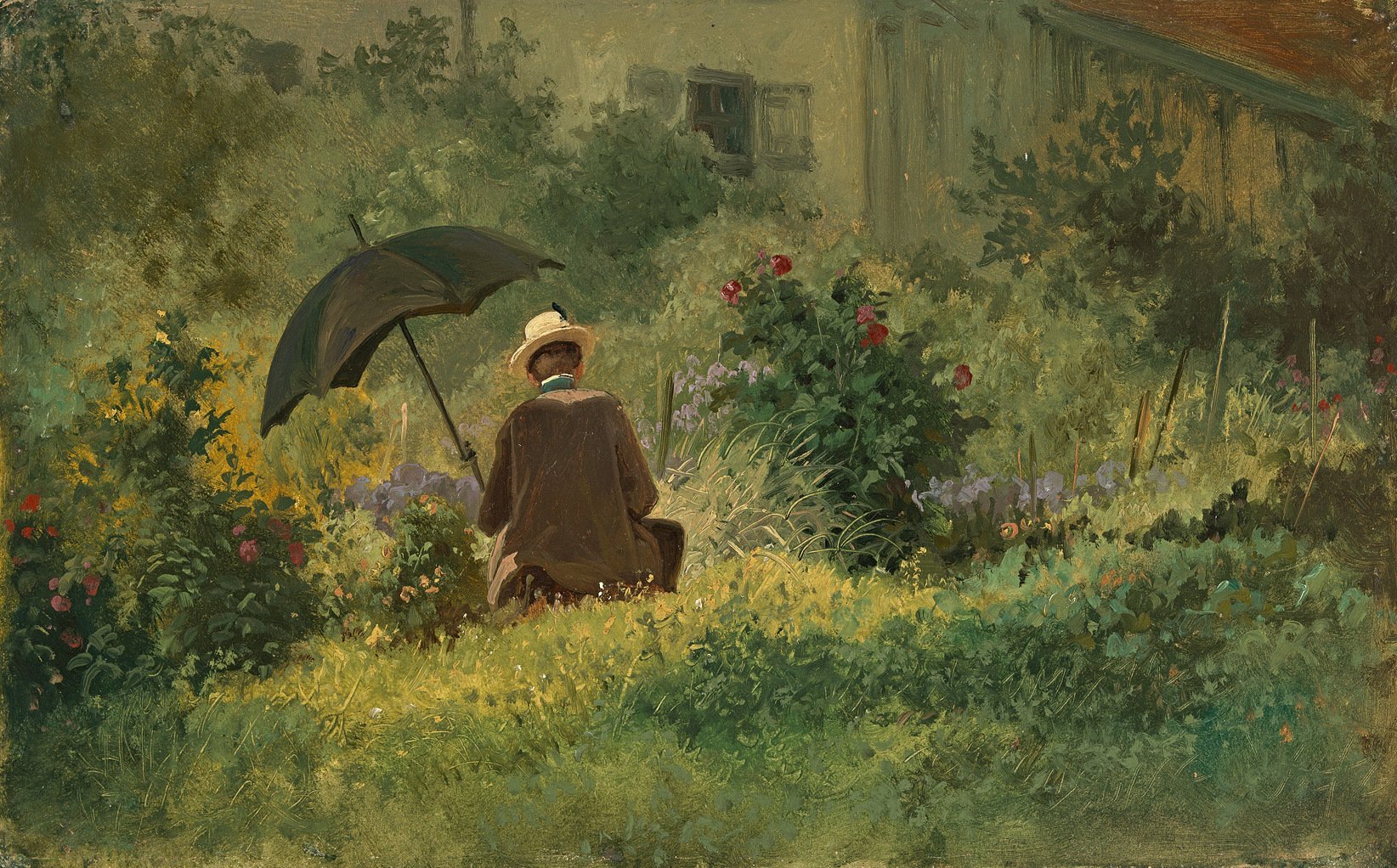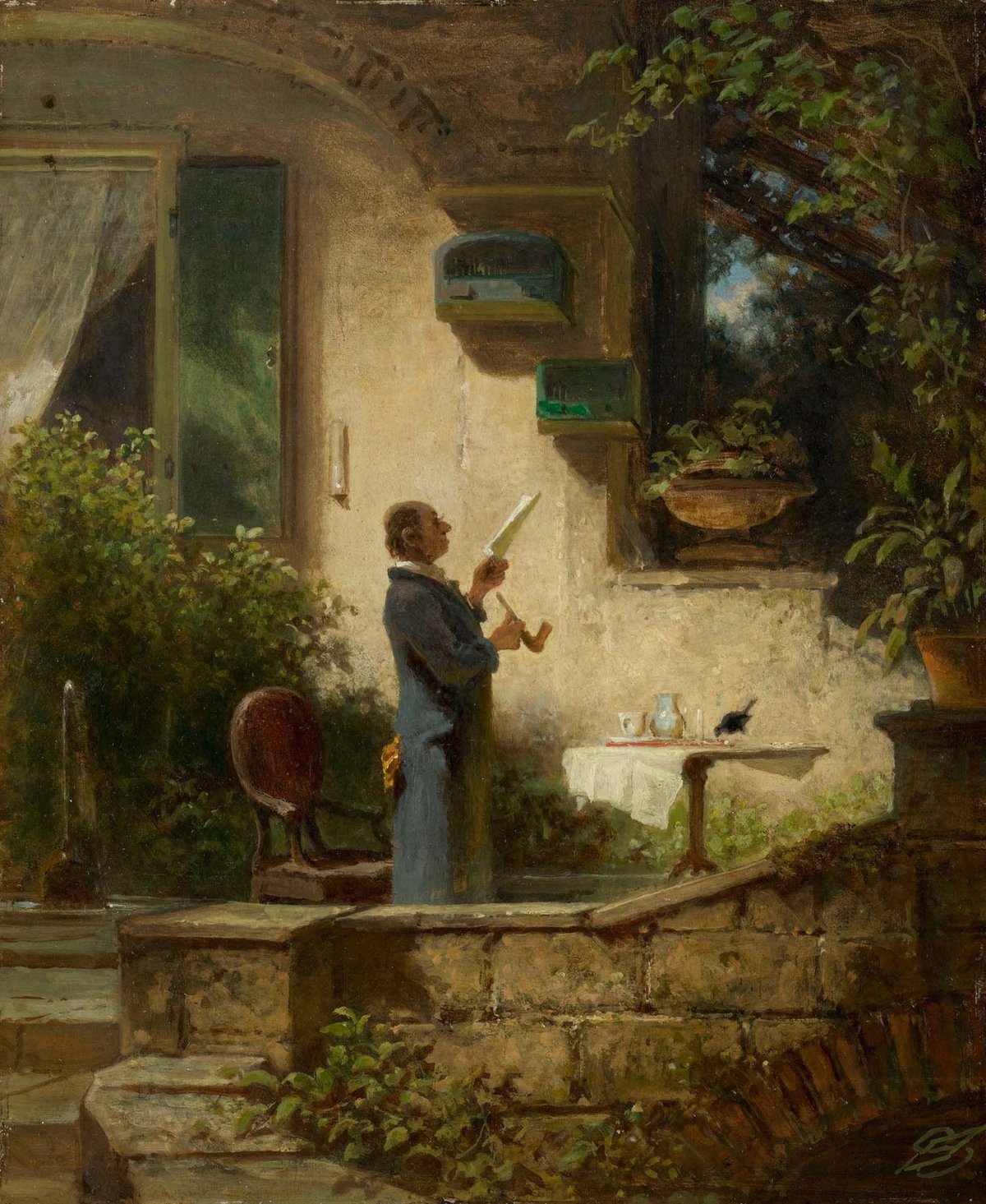Carl Spitzweg
The painter in the garden, around 1860

Carl Spitzweg
The painter in the garden, um 1860
Kunst Museum Winterthur, Stiftung Oskar Reinhart, Ankauf, 1947
Foto: SIK-ISEA, Zürich (Philipp Hitz)
The artist Carl Spitzweg did not devote his attention to the major events of his time. On the contrary, he focussed on small, familiar things, such as here in our garden picture. It shows the back of a man sitting under a parasol in the midst of lush green surroundings and about to paint a picture. Although neither the painting nor the brushes are visible, the title provides information about the occupation of the seated person. The person could be Eduard Schleich the Elder, a good friend of Spitzweg’s who was also a painter. The two landscape painters went on numerous artistic excursions together. Also the brushwork supports this assumption: in the foreground and middle ground, directly next to the painter, Spitzweg drew lines in the wet paint with the brush handle to suggest blades of grass. This technique is rather atypical for Spitzweg, but can be found more frequently in the work of his colleague Schleich, so it could be interpreted as a reference or small homage to his artist friend and his innovative brushwork.
Typical of Spitzweg’s work, however, is his preference for idyllic settings, in particular for capturing a subtle quality of light, which here permeates the scenery and creates an ethereal atmosphere around the lush vegetation. Spitzweg’s paintings were usually created in the studio. Our painter in the garden could be one of the rare exceptions. He probably owes his precise observation to his encounter with the École de Barbizon, whose landscapes were painted ‹en plein air›, that is, directly in front of the actual subject, in the open air.
Another special feature of Spitzweg’s paintings is the moment of unobserved observation, here of the painter by his colleague. Spitzweg works with the ingenuity of a director, staging even the simplest scenes in such a way that viewers outside the picture see more than the people depicted in it. The painter in the garden does not seem to be distracted from his work by anything – not even by the little bird perching boldly on his hat.
At first glance, we might view his painting as nostalgia turned into a picture. However, it can also be understood differently. If we look more closely and take a look behind the scenes, quite unexpected insights are revealed – as in the painting The Reading with a man reading a newspaper in his dressing gown. In the sheltered corner of his garden, the eccentric recluse reads spellbound about the turbulent times outside the walls of his home – about the Franco-Prussian War, the founding of the German Empire and the economic boom. But none of the noise of the world penetrates his tranquil oasis. We imagine hearing only the soothing gurgling of the fountain and the pecking of the blackbird as it nibbles a few crumbs from the table – another little bird. In this way, Spitzweg creates a subtle, tongue-in-cheek gesture of irony: two birdcages hang on the wall of the house, in which our educated citizen keeps his own birds, while the free little thief is able to make off with breakfast unnoticed.

Carl Spitzweg, The Reading, 1870–1875
Kunst Museum Winterthur, Dauerleihgabe der Stiftung für Kunst, Kultur und Geschichte, Winterthur, 2025
Similarly, the little bird in our painter’s garden is not simply a detail lovingly placed in the picture or on the hat. Rather, the cheerful little animal signifies an encounter with life – the unexpected intrusion of reality into Spitzweg’s self-contained pictorial worlds, so to speak. Thus, his art is more steeped in subversion and ambiguity than it might appear at first glance.


